Abstract
Nineteen soils, three freshwater lake sediments, and oxidized poultry manure were examined to determine the dominant denitrifier populations. The samples, most shown or expected to support active denitrification, were from eight countries and included rice paddy, temperate agricultural, rain forest, organic, and waste-treated soils. Over 1,500 organisms that could grow anaerobically on nitrate agar were isolated. After purification, 146 denitrifiers were obtained, as verified by production of N2 from NO3-. These isolates were characterized by 52 properties appropriate for the Pseudomonas-Alcaligenes group. Numerical taxonomic procedures were used to group the isolates and compare them with nine known denitrifier species. The major group isolated was representative of Pseudonomas fluorescens biotype II. The second most prevalent group was representative of Alcaligenes. Other Pseudomonas species as well as members of the genus Flavobacterium, the latter previously not known to denitrify, also were identified. One-third of the isolates could not utilize glucose or other carbohydrates as sole carbon sources. Significantly, none of the numerically dominant denitrifiers we isolated resembled the most studied species: Pseudomonas denitrificans, Pseudomonas perfectomarinus, and Paracoccus denitrificans. Denitrification appears to be a property of a very diverse group of gram-negative, motile bacteria, as shown by the large number (22.6%) of ungrouped organisms. The diversity of denitrifiers from a given sample was usually high, with at least two groups present. Denitrifiers, nitrite accumulators, and organisms capable of anaerobic growth were present in the ratio of 0.20±0.23:0.81±0.23:1. There were few correlations between their numbers and the sample characteristics measured. However, the temperatures at which isolates could grow were significantly related to the temperatures of the environments from which they were isolated. Regression analysis revealed few relationships between physical parameters and bacterial types, save for the anaerobe numbers, in which 94% of the variance could be accounted for.
Full text
PDF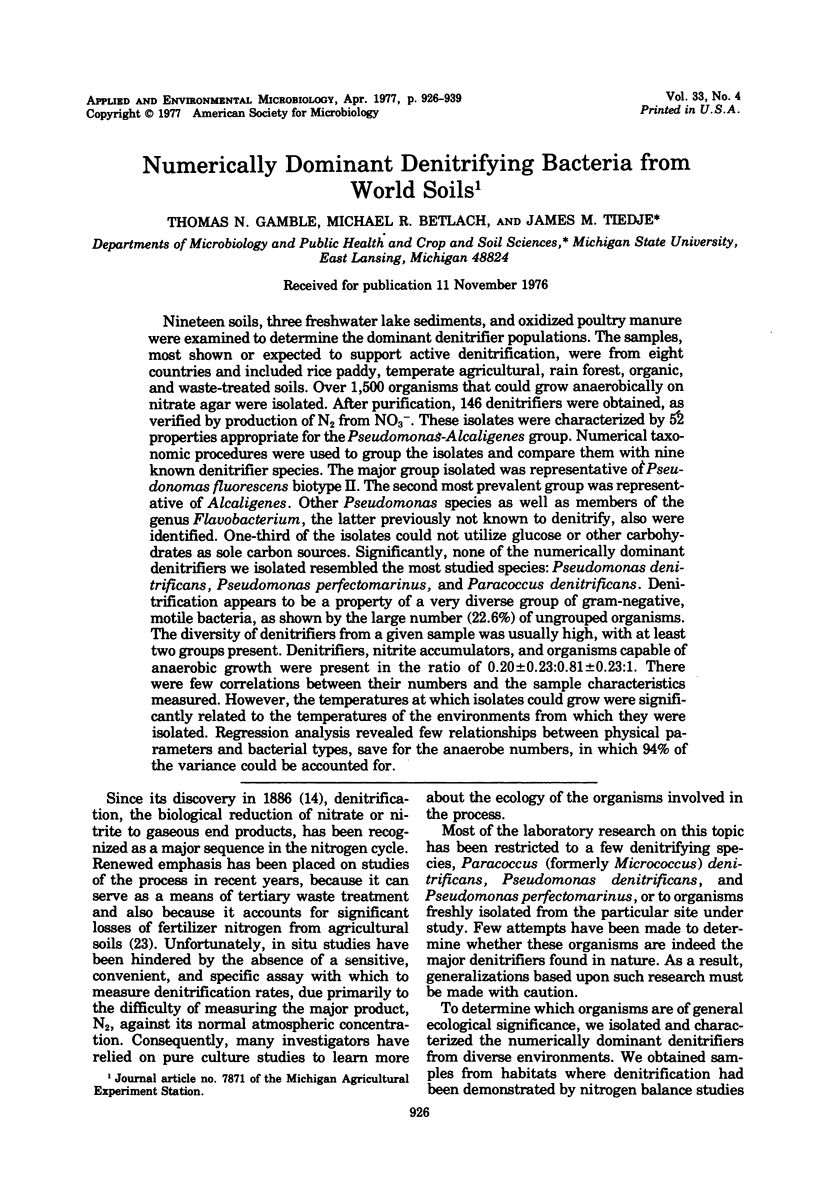
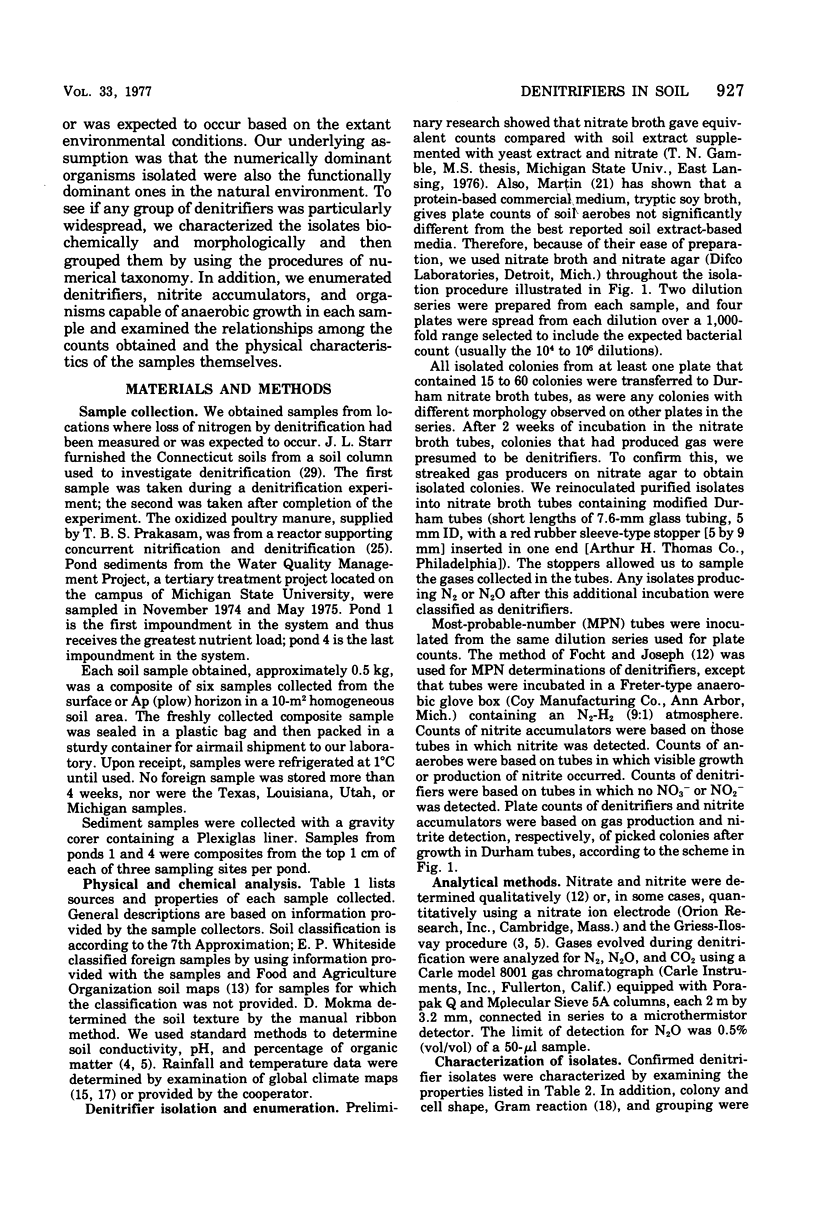
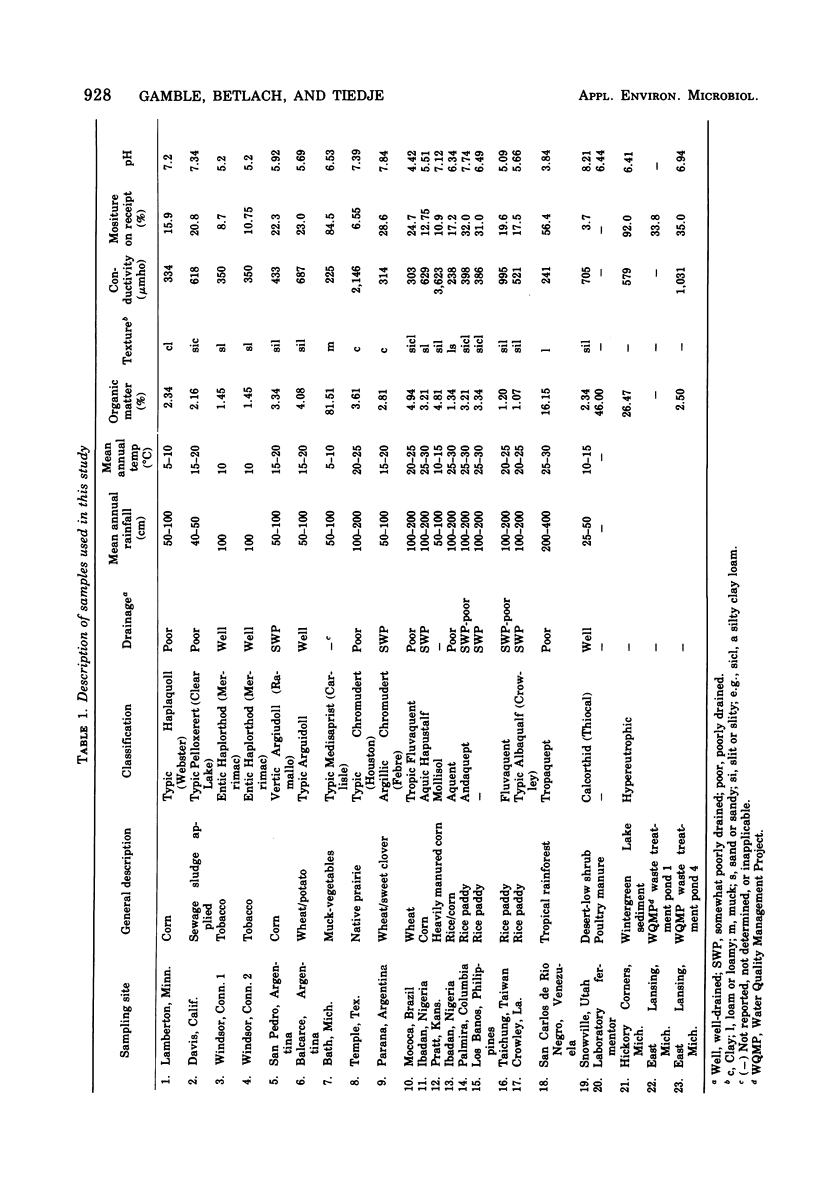
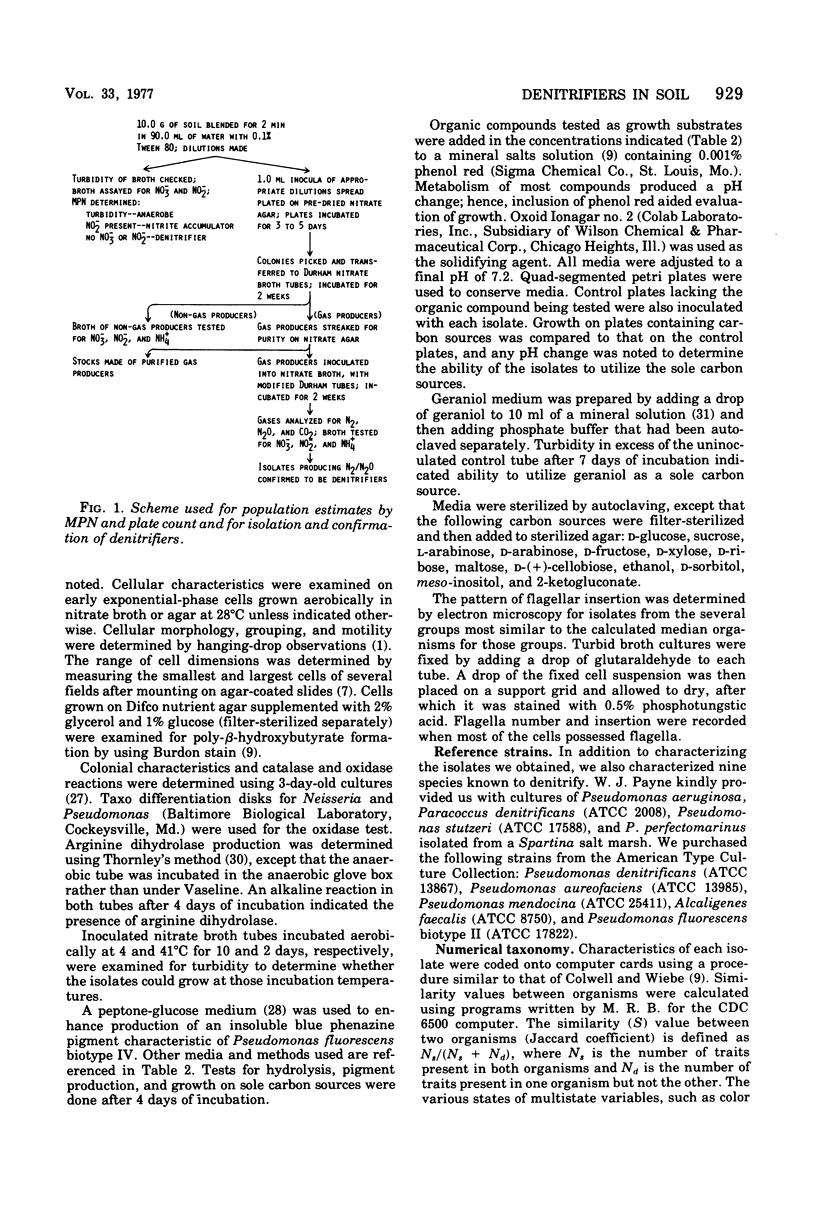
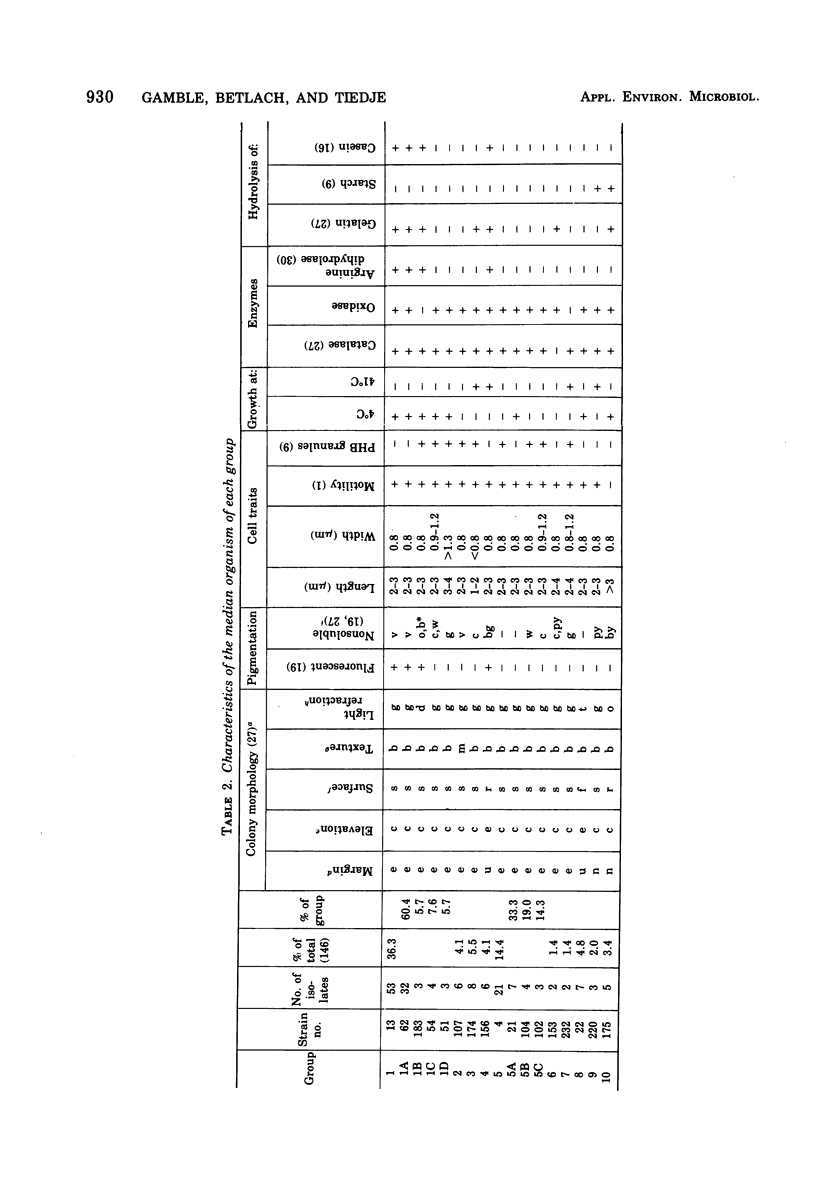
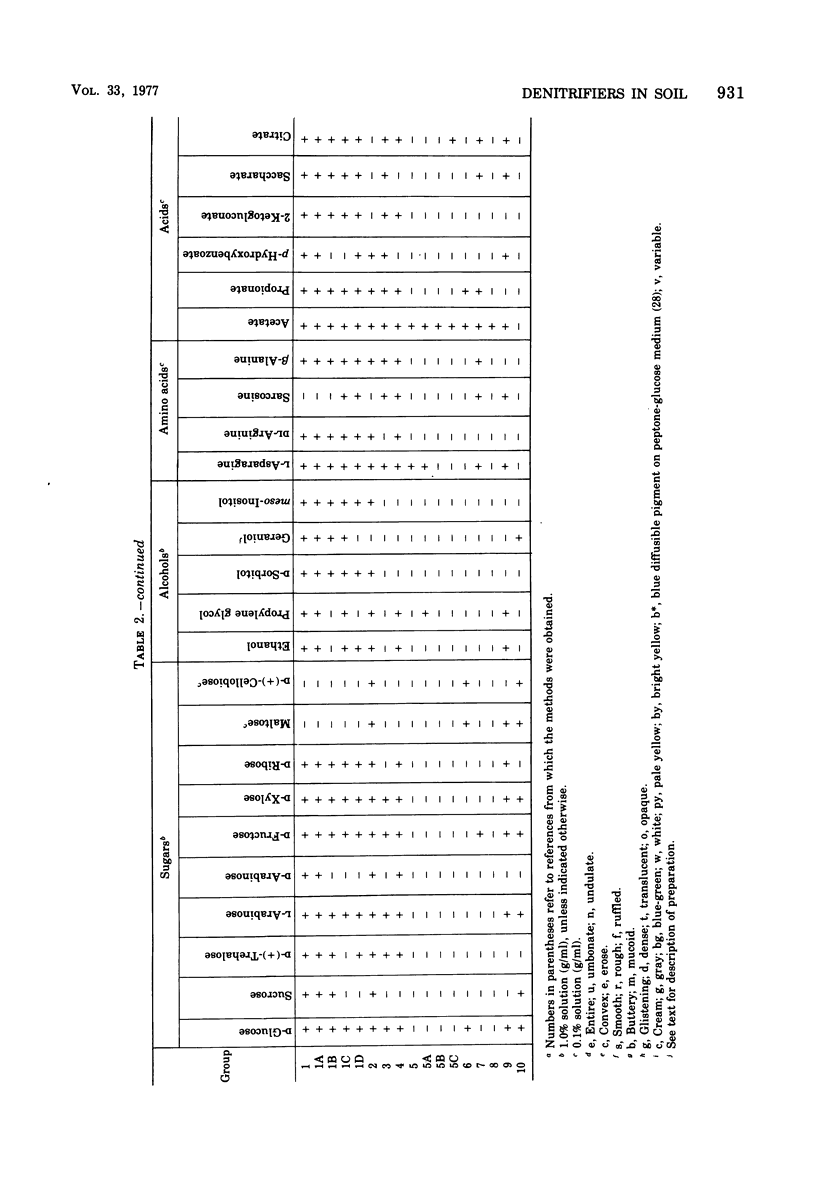
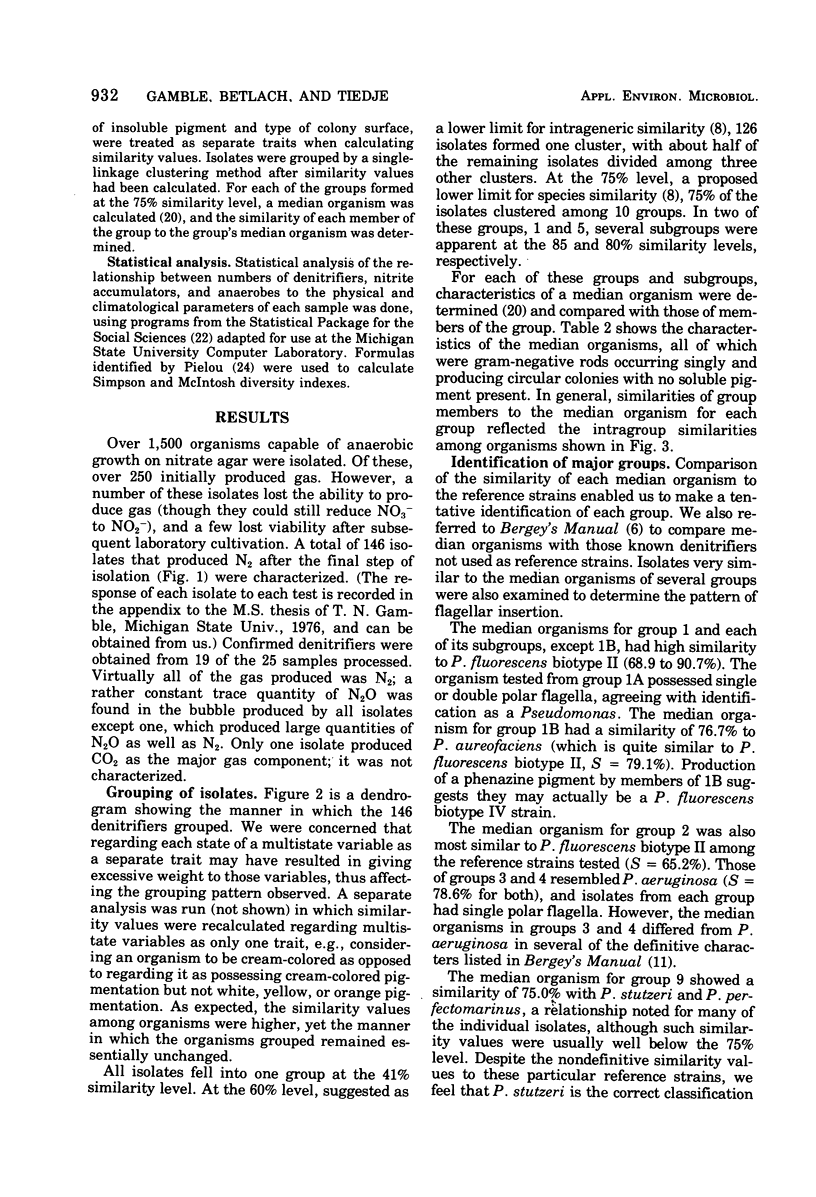
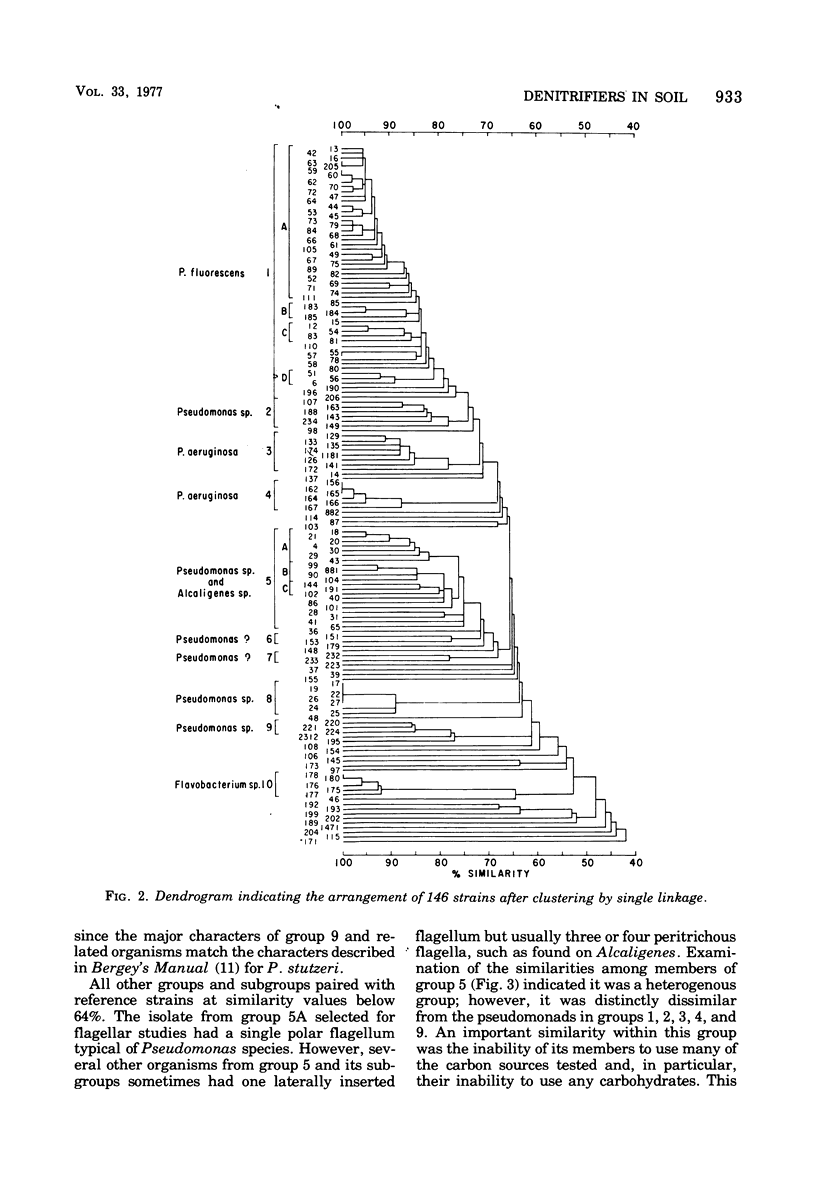
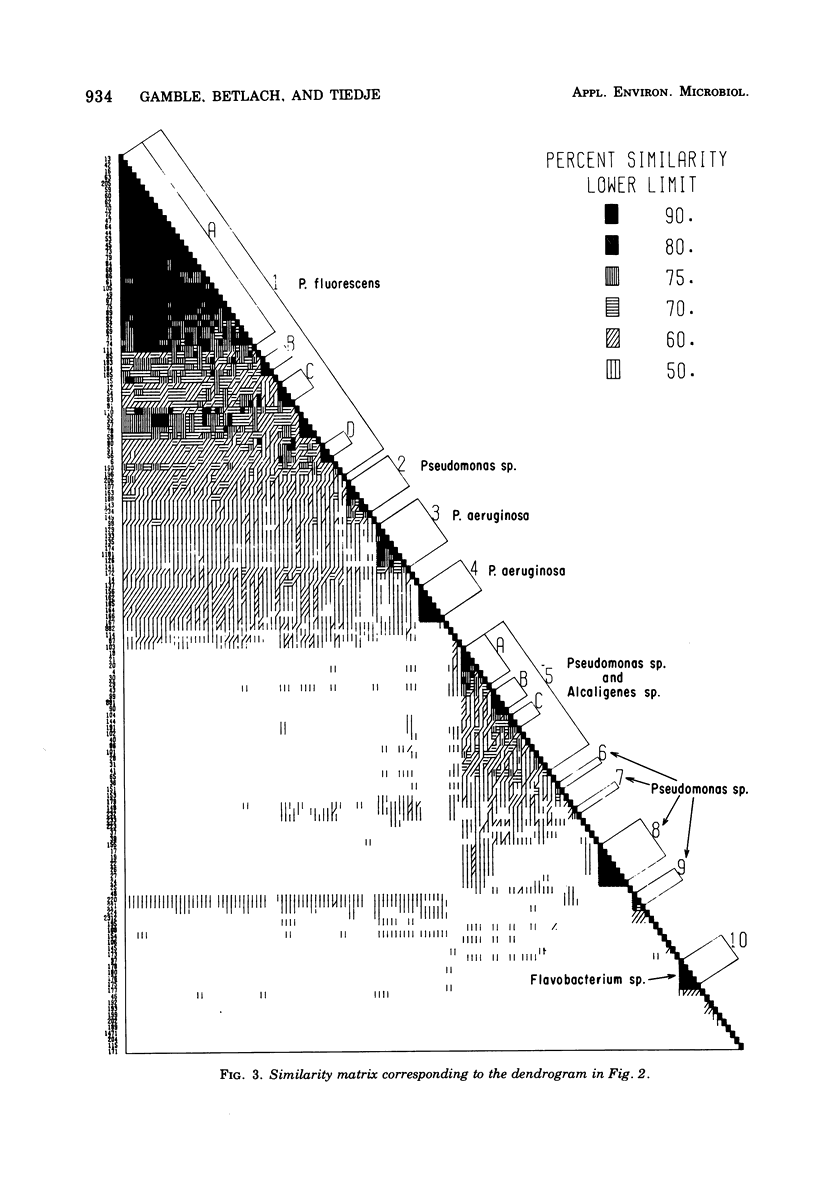
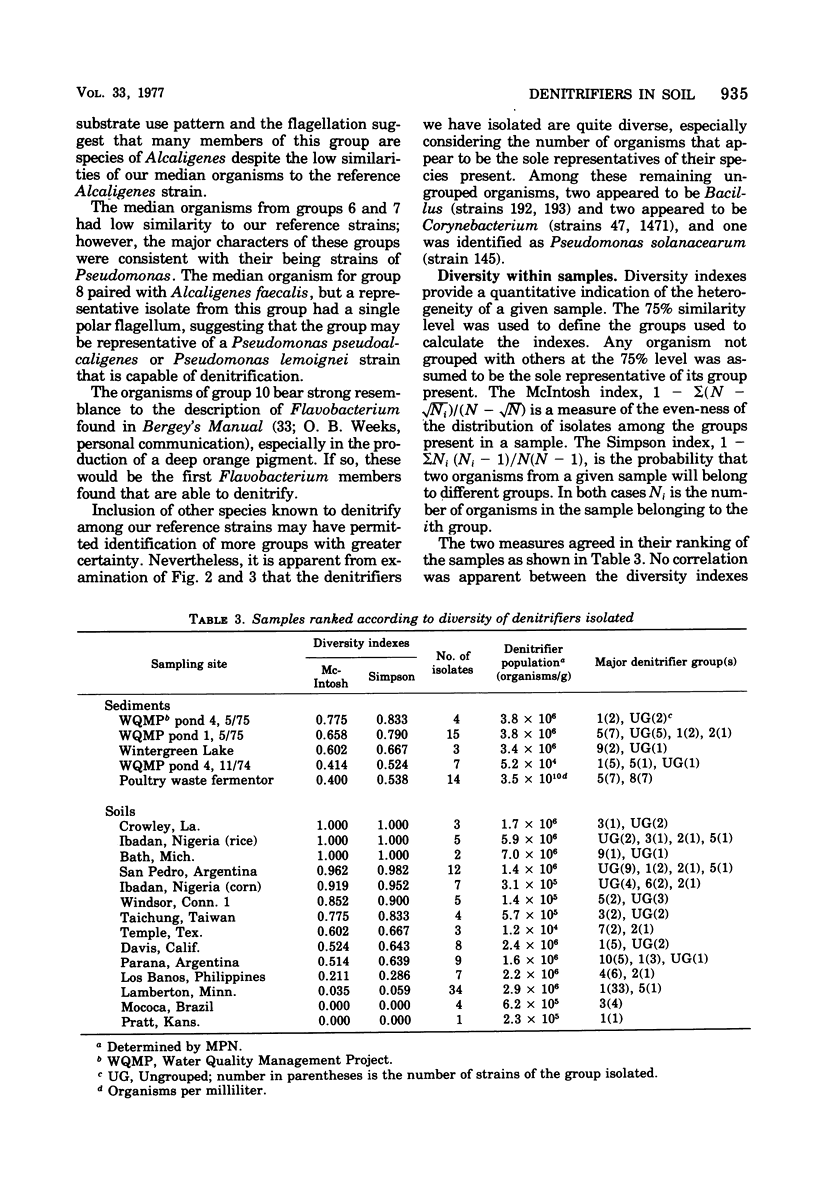
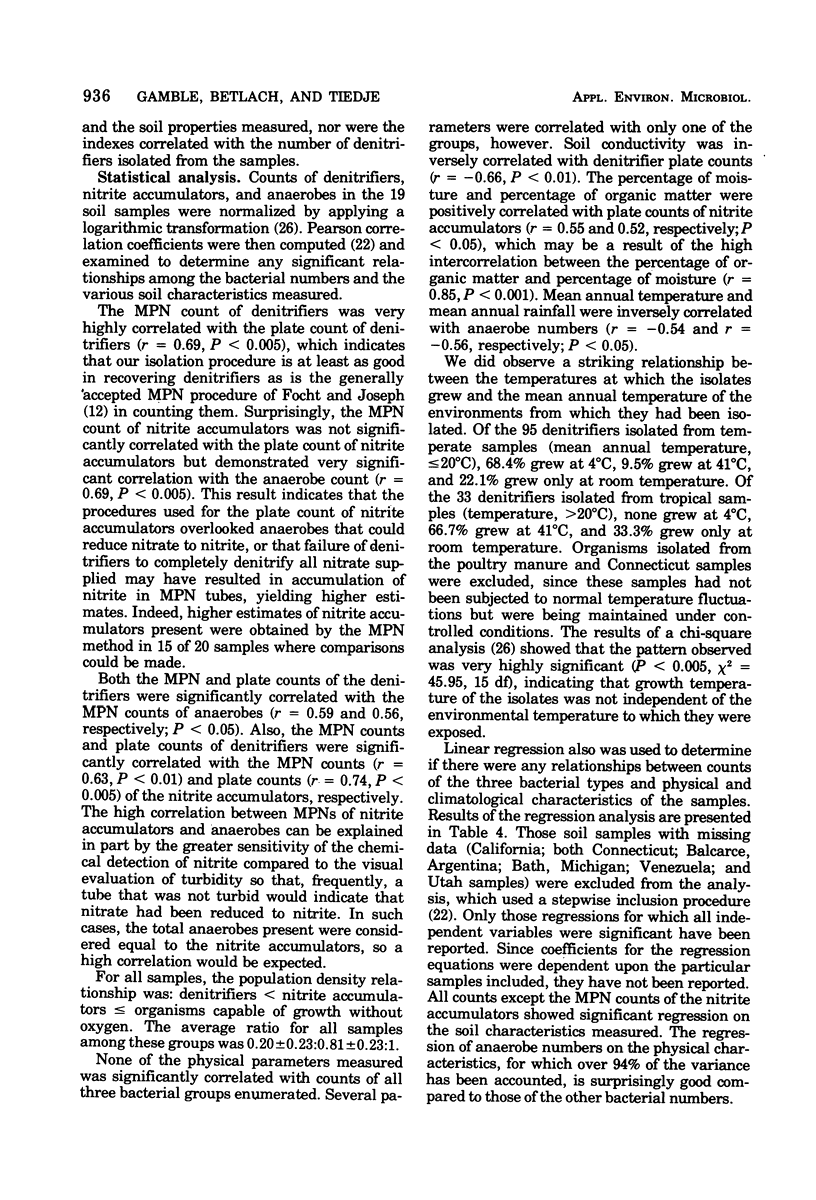
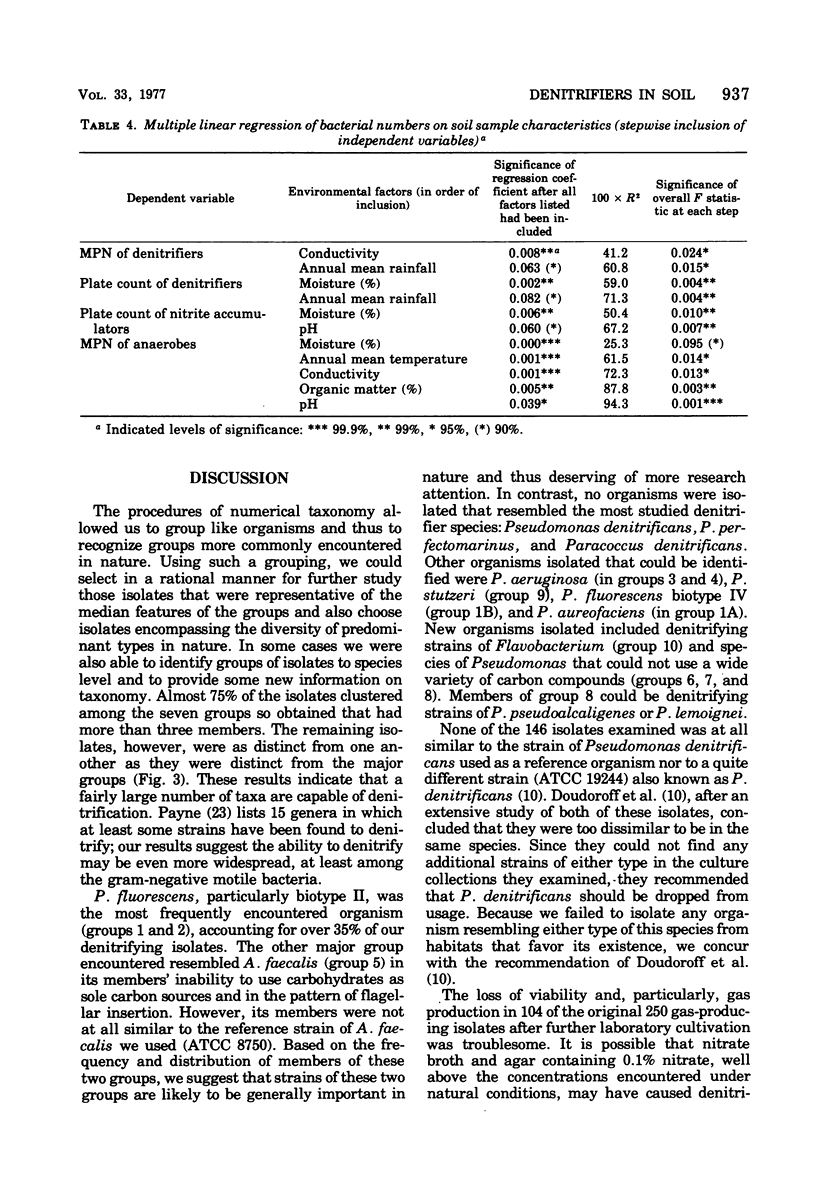
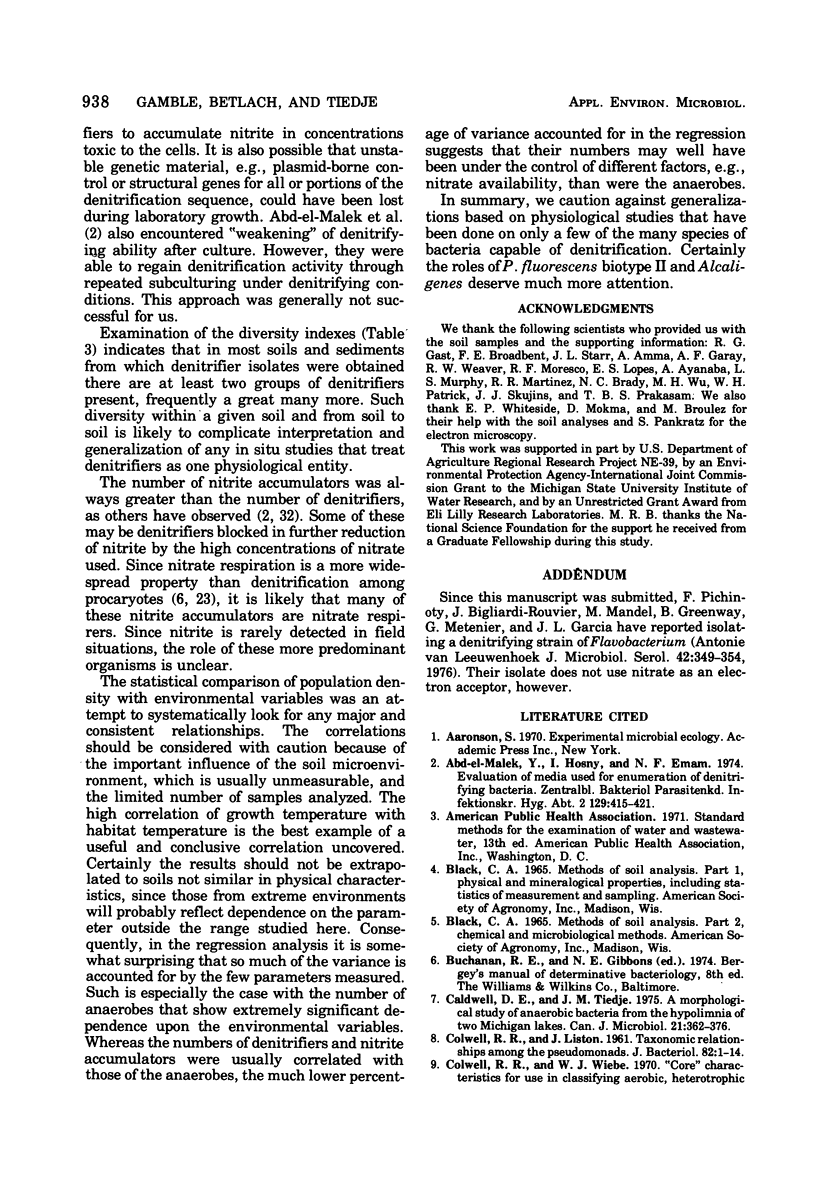
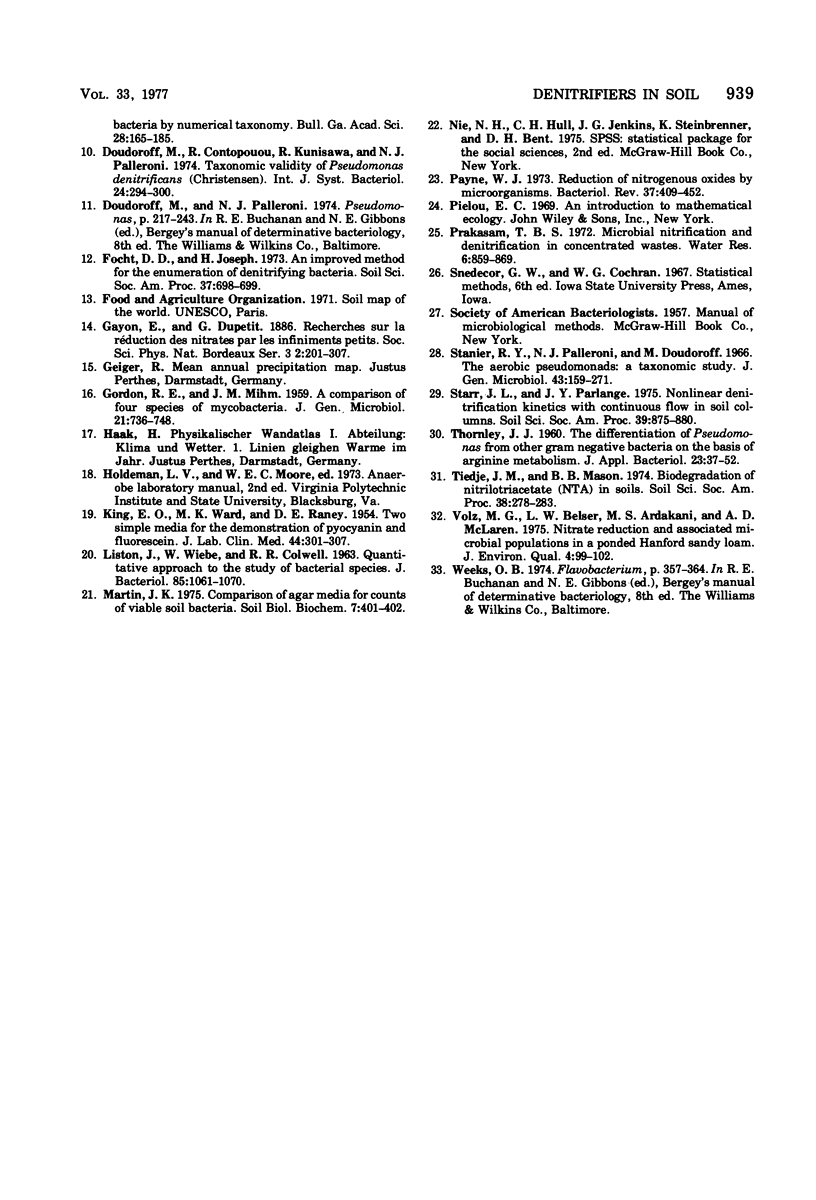
Selected References
These references are in PubMed. This may not be the complete list of references from this article.
- Abd-el-Malek Y., Hosny I., Emam N. F. Evaluation of media, used for enumeration of denitrifying bacteria. Zentralbl Bakteriol Parasitenkd Infektionskr Hyg. 1974;129(5):415–421. doi: 10.1016/s0044-4057(74)80003-1. [DOI] [PubMed] [Google Scholar]
- COLWELL R. R., LISTON J. Taxonomic relationships among the pseudomonads. J Bacteriol. 1961 Jul;82:1–14. doi: 10.1128/jb.82.1.1-14.1961. [DOI] [PMC free article] [PubMed] [Google Scholar]
- Caldwell D. E., Tiedje J. M. A morphological study of anaerobic bacteria from the hypolimnia of two Michigan lakes. Can J Microbiol. 1975 Mar;21(3):362–376. doi: 10.1139/m75-051. [DOI] [PubMed] [Google Scholar]
- GORDON R. E., MIHM J. M. A comparison of four species of mycobacteria. J Gen Microbiol. 1959 Dec;21:736–748. doi: 10.1099/00221287-21-3-736. [DOI] [PubMed] [Google Scholar]
- Hanson C. W., Martin W. J. Microwave oven for melting laboratory media. J Clin Microbiol. 1978 Apr;7(4):401–402. doi: 10.1128/jcm.7.4.401-402.1978. [DOI] [PMC free article] [PubMed] [Google Scholar]
- KING E. O., WARD M. K., RANEY D. E. Two simple media for the demonstration of pyocyanin and fluorescin. J Lab Clin Med. 1954 Aug;44(2):301–307. [PubMed] [Google Scholar]
- LISTON J., WIEBE W., COLWELL R. R. QUANTITATIVE APPROACH TO THE STUDY OF BACTERIAL SPECIES. J Bacteriol. 1963 May;85:1061–1070. doi: 10.1128/jb.85.5.1061-1070.1963. [DOI] [PMC free article] [PubMed] [Google Scholar]
- Payne W. J. Reduction of nitrogenous oxides by microorganisms. Bacteriol Rev. 1973 Dec;37(4):409–452. doi: 10.1128/br.37.4.409-452.1973. [DOI] [PMC free article] [PubMed] [Google Scholar]
- Pichinoty F., Bigliardi-Rouvier J., Mandel M., Greenway B., Méténier G., Garcia J. L. The isolation and properties of a denitrifying bacterium of the genus Flavobacterium. Antonie Van Leeuwenhoek. 1976;42(3):349–354. doi: 10.1007/BF00394134. [DOI] [PubMed] [Google Scholar]
- Stanier R. Y., Palleroni N. J., Doudoroff M. The aerobic pseudomonads: a taxonomic study. J Gen Microbiol. 1966 May;43(2):159–271. doi: 10.1099/00221287-43-2-159. [DOI] [PubMed] [Google Scholar]


